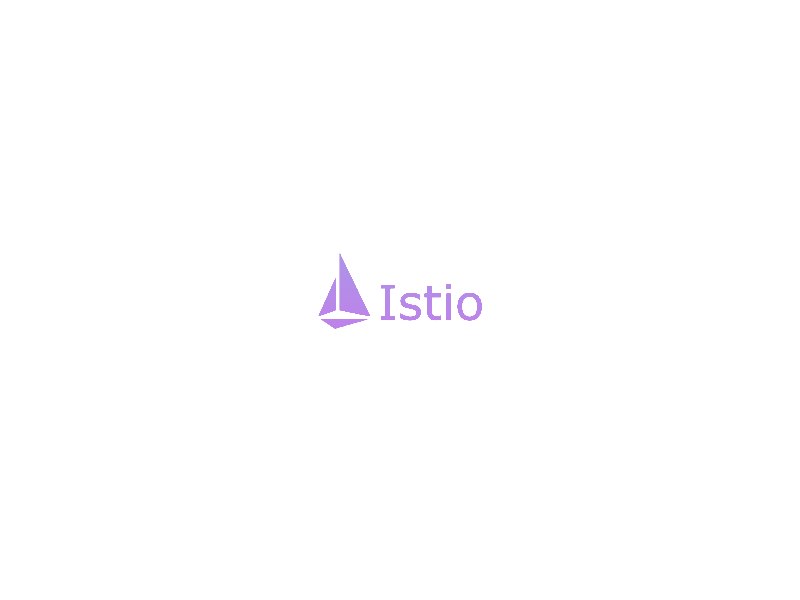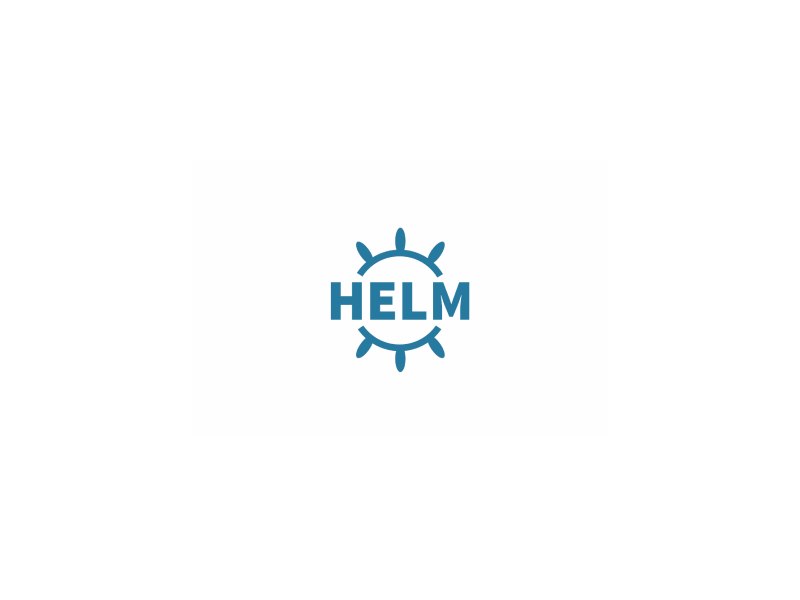The future of DevOps is like a spectacular fireworks display, where surprising innovations and explosive advancements light up the tech landscape. In this article, we’ll explore how DevOps is evolving and shaping the way organizations develop, deploy, and maintain software.
Imagine a world where software development and IT operations seamlessly blend together, enabling faster delivery, improved collaboration, and increased efficiency. That’s the essence of DevOps, a methodology that has revolutionized the software industry. But what lies ahead for this dynamic discipline?
As we gaze into the crystal ball of technology, we can expect several key trends to define the future of DevOps. One such trend is the rise of AIOps (Artificial Intelligence for IT Operations). Picture an AI assistant, continuously monitoring system performance, analyzing logs, and automatically resolving issues. This fusion of AI with DevOps promises to enhance observability, streamline incident response, and optimize resource allocation.
Another exciting aspect on the horizon is the emergence of GitOps. Taking inspiration from the popular version control system Git, GitOps extends its principles to infrastructure and operations. With GitOps, teams can manage their infrastructure as code, ensuring consistency, traceability, and repeatability. By leveraging GitOps, organizations gain greater control over their deployments while maintaining agility and reducing human error.
In addition, containerization and orchestration technologies like Kubernetes will continue to play a crucial role in the DevOps landscape. Containers provide a lightweight and scalable way to package and distribute applications. Meanwhile, Kubernetes orchestrates these containers, providing automated deployment, scaling, and management capabilities. This powerful duo enables rapid application delivery, simplifies scalability, and ensures high availability.
But let’s not forget about security, an ever-present concern in the digital realm. DevSecOps, the integration of security practices into DevOps processes, is gaining momentum. By incorporating security throughout the software development lifecycle, organizations can proactively identify vulnerabilities, manage risks, and safeguard their applications and data.
As the future unfolds, DevOps will become even more intertwined with cloud-native technologies. The shift towards cloud computing, microservices, and serverless architectures will shape the DevOps landscape. With greater flexibility, scalability, and cost-efficiency offered by the cloud, DevOps teams will leverage these advancements to deliver value to end-users faster than ever before.
In conclusion, the future of DevOps promises a thrilling journey of surprises and explosions. From AIOps to GitOps, containerization to security integration, and cloud-native technologies, DevOps will continue to evolve and revolutionize the software development process. As organizations embrace these trends, they will unlock new levels of collaboration, efficiency, and innovation. So, fasten your seatbelts and get ready for an exhilarating ride into the future of DevOps!
Incorporating AI and Machine Learning in DevOps
Picture this: a surprise explosion of efficiency and productivity in your DevOps processes. AI and ML can help streamline repetitive tasks, automate decision-making, and identify patterns that escape human perception. By harnessing the power of data, these technologies enable intelligent algorithms to optimize workflows, detect and fix issues, and predict system behavior with uncanny accuracy.
With AI and ML as your trusty sidekicks, you can bid farewell to tedious manual testing. These superheroes of automation can analyze vast amounts of code, uncovering vulnerabilities and bugs that could otherwise go unnoticed. By learning from past mistakes and successes, they continuously improve quality assurance processes, ensuring your software performs flawlessly under real-world conditions.
But wait, there’s more! Embracing AI and ML in DevOps empowers you to proactively respond to potential bottlenecks or failures. Through predictive analytics, these technologies provide actionable insights that alert you to potential risks before they materialize, allowing you to take preventive measures. It’s like having a crystal ball that foretells the future health and performance of your systems, enabling you to make informed decisions.
Imagine AI as your personal assistant, tirelessly monitoring your infrastructure and alerting you to any anomalies. Its adaptive capabilities allow it to adapt to changing conditions and self-heal, minimizing downtime and optimizing resource allocation. This harmonious blend of AI and DevOps creates a feedback loop that continuously improves operational efficiency, ultimately leading to enhanced customer satisfaction.
In conclusion, incorporating AI and ML in DevOps is a game-changer. This explosive combination brings forth a surprise package of efficiency, productivity, and quality. By embracing these technologies, you can automate mundane tasks, enhance testing processes, predict system behavior, and proactively tackle issues. So, fasten your seatbelt and embark on this thrilling journey where AI and ML take DevOps to new heights!
DevOps Security Challenges and Solutions Ahead
When it comes to DevOps, the fusion of development and operations, security becomes a critical concern. As organizations embrace the speed and efficiency of DevOps practices, they often encounter unique security challenges along the way.
One of the primary challenges is the integration of security practices throughout the entire DevOps lifecycle. Traditionally, security measures were implemented at the end of the development process, but in DevOps, security needs to be integrated seamlessly from the beginning. This shift requires collaboration between developers, operations teams, and security professionals to ensure that security remains a top priority throughout the entire software development process.
Another challenge is maintaining visibility and control over the rapidly changing infrastructure and deployment environments. With frequent updates and deployments, it can be challenging to keep track of changes and potential vulnerabilities. Automated monitoring, continuous testing, and robust configuration management are crucial to address this issue effectively.
Additionally, ensuring secure communication and authentication between different components and services is another concern. DevOps relies on various interconnected systems and APIs, making it essential to implement strong encryption protocols, secure APIs, and proper access controls to prevent unauthorized access and data breaches.
To tackle these challenges, several solutions can be implemented. Firstly, adopting a proactive security mindset and integrating security into the DevOps culture is crucial. This involves promoting security awareness among team members, providing training, and implementing secure coding practices.
Furthermore, leveraging automation tools for vulnerability scanning, code analysis, and continuous monitoring can significantly enhance security measures. These tools help identify vulnerabilities early in the development cycle, allowing teams to remediate them promptly.
Implementing robust identity and access management solutions, such as multi-factor authentication and role-based access control, adds an extra layer of protection to sensitive resources and data.
By embracing a DevSecOps approach, where security is an integral part of the DevOps process, organizations can effectively address the security challenges in a proactive and systematic manner.
In conclusion, DevOps security presents unique challenges that need to be addressed for successful software development and deployment. By integrating security practices throughout the DevOps lifecycle, ensuring visibility and control, and implementing robust security measures, organizations can overcome these challenges and build secure, reliable systems that meet the needs of today’s dynamic digital landscape.
Emerging Trends in DevOps Tooling and Technologies
One of the most significant trends shaking up the DevOps landscape is the rise of containerization. With technologies like Docker and Kubernetes leading the charge, containers offer a lightweight and efficient way to package applications and their dependencies, making deployments smoother than ever before. Containers enable seamless integration between development and operations, allowing for rapid scaling and increased flexibility.
Another explosive trend taking the industry by storm is Infrastructure as Code (IaC). Instead of relying on manual configuration of infrastructure resources, IaC allows developers to define their infrastructure using code. Tools such as Terraform and AWS CloudFormation enable teams to provision and manage their cloud resources effortlessly. By treating infrastructure as code, organizations can achieve consistency, scalability, and automation, reducing the risk of human error and streamlining deployment processes.
But that’s not all – the surprise factor continues with the increasing adoption of serverless computing. Serverless platforms, like AWS Lambda and Azure Functions, allow developers to focus solely on writing code without the need to provision or manage servers. This paradigm shift simplifies the development process and ensures maximum scalability and cost efficiency, as you only pay for the actual execution time of your functions.
Additionally, the explosion of Artificial Intelligence (AI) and Machine Learning (ML) is causing ripples in the DevOps world. These technologies are being integrated into various tools and processes, enabling intelligent automation, predictive analytics, and enhanced decision-making. From intelligent code suggestions to automated testing and monitoring, AI and ML are transforming how DevOps teams work and accelerating the software development lifecycle.
In conclusion, the DevOps landscape is experiencing a whirlwind of emerging trends that are surprising and explosive. Containerization, Infrastructure as Code, serverless computing, and the integration of AI and ML are revolutionizing how teams collaborate, automate, and deploy applications. By staying ahead of these trends and embracing the latest tooling and technologies, organizations can unlock new levels of efficiency, scalability, and innovation in their software development practices. So buckle up and get ready to ride the wave of DevOps transformation!
DevOps Culture and Collaboration in the Future
Imagine a world where software development and IT operations seamlessly coexist, working together like a well-oiled machine. This is the essence of DevOps culture and collaboration—a future where teams break down silos, foster open communication, and embrace continuous improvement. In this article, we delve into the significance of DevOps culture and collaboration, exploring how it transforms organizations to deliver high-quality software at an unprecedented pace.
Breaking Down Barriers and Fostering Collaboration:
At its core, DevOps culture emphasizes breaking down barriers between development and operations teams. Gone are the days of finger-pointing and blame games. Instead, a collaborative mindset prevails, where teams work together towards a common goal—delivering customer value. By encouraging open communication channels, fostering trust, and promoting cross-functional collaboration, organizations can unlock untapped potential and drive innovation.
The Power of Automation and Tooling:
DevOps also heavily relies on automation and tooling to streamline processes and improve efficiency. Automation reduces manual errors, accelerates delivery cycles, and frees up valuable time for teams to focus on more meaningful tasks. From infrastructure provisioning to testing and deployment, automated pipelines empower developers and operations professionals alike, promoting a smooth and reliable software delivery process.
Continuous Feedback Loop:
In the future, a thriving DevOps culture will place significant emphasis on establishing a continuous feedback loop. Frequent and constructive feedback fosters a culture of learning and improvement, enabling teams to iterate rapidly and adapt to changing market demands. By leveraging metrics, monitoring tools, and user feedback, organizations gain valuable insights that drive decision-making and enhance the quality of their products or services.
Embracing a Learning Mindset:
To truly thrive in a DevOps culture, individuals must adopt a learning mindset. Continuous learning and self-improvement should be ingrained within the organization’s DNA. Encouraging employees to upskill, explore new technologies, and learn from failures fosters an environment of growth and innovation. By valuing learning as a core principle, organizations can stay ahead in an ever-evolving technological landscape.
In general, the future of DevOps culture and collaboration holds immense potential for organizations aiming to deliver exceptional software products and services. By breaking down silos, fostering collaboration, embracing automation, establishing a continuous feedback loop, and nurturing a learning mindset, companies can cultivate a culture that thrives on driving value and innovation. So let us embrace this future together, where surprise and explosion of creativity are accompanied by the power of collaboration and a relentless drive for excellence. The possibilities are limitless, and the journey is bound to be thrilling. Are you ready?
Scalability and Flexibility in the Future of DevOps
Scalability is the ability of a system to handle increasing workloads without compromising performance. In the context of DevOps, scalability plays a vital role in ensuring that applications can handle larger user bases and growing data volumes. With the explosion of digital services and the rise of cloud computing, organizations need to be prepared for unexpected surges in demand. Scalable DevOps practices enable businesses to seamlessly scale their infrastructure and resources in response to changing needs.
Flexibility, on the other hand, refers to the adaptability of a system to accommodate changes and new requirements. In the fast-paced world of software development, being able to respond quickly to customer feedback or market demands is essential. Agile methodologies have long been embraced by DevOps teams, allowing them to iterate and deliver value at a rapid pace. However, as technology evolves, so must our approaches. The future of DevOps lies in its ability to provide even greater flexibility, enabling organizations to pivot, experiment, and innovate with ease.
To achieve scalability and flexibility in DevOps, several trends are emerging. One such trend is the adoption of containerization technologies like Docker and Kubernetes. Containers provide a lightweight and portable way to package applications along with their dependencies, allowing for easy deployment across different environments. This flexibility enables teams to build scalable and resilient systems, while also facilitating faster development cycles.
Another important aspect is the rise of serverless computing. With serverless architectures, developers can focus purely on writing code without having to manage underlying infrastructure. Cloud providers take care of scaling and resource allocation, allowing for seamless scalability and reduced operational overhead. This approach not only increases efficiency but also provides the flexibility to handle varying workloads effectively.
In conclusion, scalability and flexibility are crucial elements shaping the future of DevOps. As organizations strive to meet evolving customer demands and navigate the complexities of a digital landscape, embracing scalable infrastructure and flexible development practices will be key. By adopting containerization, serverless computing, and other emerging technologies, businesses can position themselves for success in an ever-changing world. So, are you ready to embrace the surprises and explosions that lie ahead in the exciting realm of DevOps?
Shifting Paradigms: DevOps and Cloud-Native Applications
Picture this: traditional software development was like a slow-moving train chugging along on fixed tracks. But then came the paradigm shift in the form of DevOps and cloud-native applications. It was like a sudden explosion that shattered the old ways and opened up a world of possibilities.
DevOps, short for Development Operations, is a collaborative approach that bridges the gap between software development and IT operations. It emphasizes communication, cooperation, and integration to streamline the entire development process. Think of it as a symphony orchestra where developers, testers, and operations work together in perfect harmony, creating a seamless flow of innovation.
Cloud-native applications, on the other hand, have revolutionized the way we build and deploy software. These applications are designed specifically for cloud environments, leveraging the scalability and flexibility offered by cloud platforms. They are built using microservices architecture, where applications are divided into smaller, loosely coupled components. This allows for rapid development, deployment, and scaling, giving businesses a competitive edge.
The marriage of DevOps and cloud-native applications is like a fireworks display on a starry night. They complement each other perfectly, enhancing speed, agility, and reliability. With DevOps practices driving the development and deployment of cloud-native applications, organizations can respond to market demands faster than ever before.
But why should you care about this explosive combination? Well, imagine being able to deliver new features and updates to your customers at lightning speed. Imagine the power of scalability, where you can effortlessly handle increased traffic without breaking a sweat. Imagine the agility to adapt and respond to changing customer needs, ensuring your business stays ahead.
In this fast-paced digital era, embracing the shifting paradigms of DevOps and cloud-native applications is essential for organizations that want to thrive. By combining the collaborative nature of DevOps with the scalability of cloud-native applications, businesses can unleash a world of surprises and explosions in the most positive sense.
So buckle up and get ready for a wild ride as we explore the endless possibilities that arise from merging DevOps and cloud-native applications. Prepare to be amazed by the transformative power that awaits you on this thrilling journey. The future is here, and it’s filled with surprise and explosion, all made possible by the dynamic duo of DevOps and cloud-native applications.




